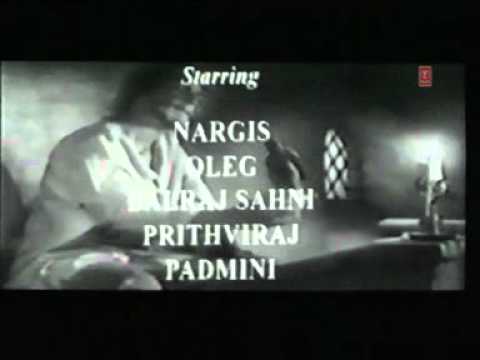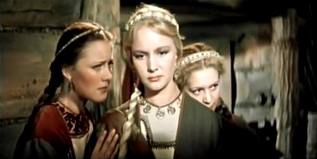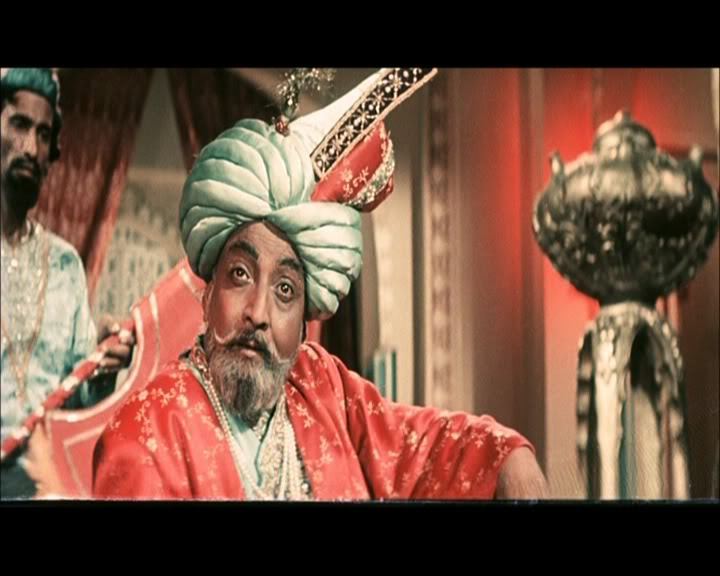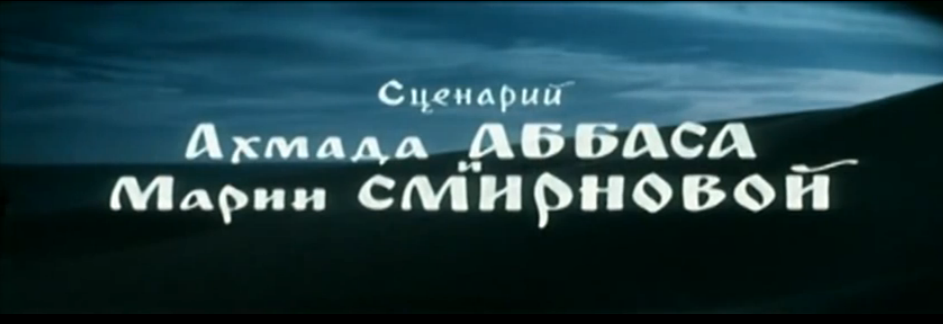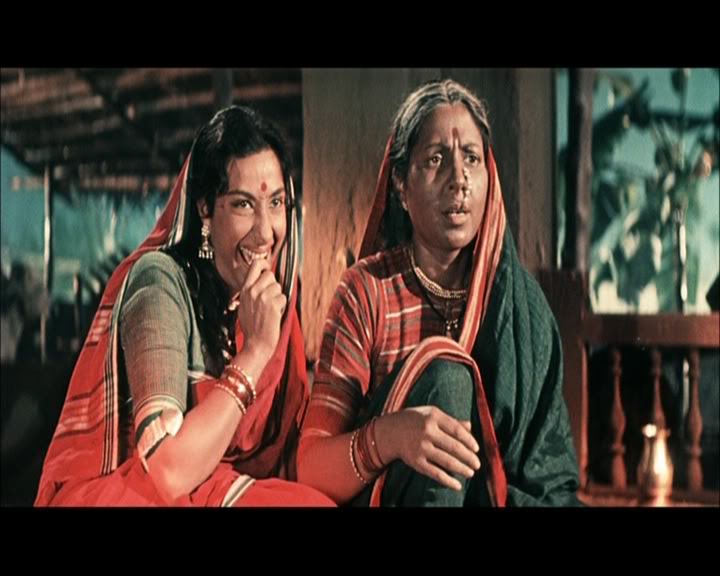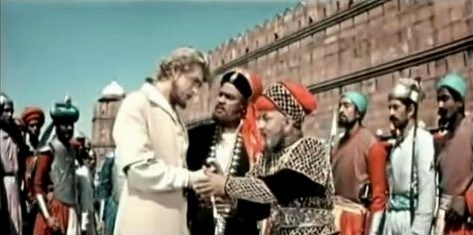Pardesi (1957)
This is a collection of articles archived for the excellence of their content.
|
Contents |
India’s first 'Scope (widescreen) film
By Parvez Dewan
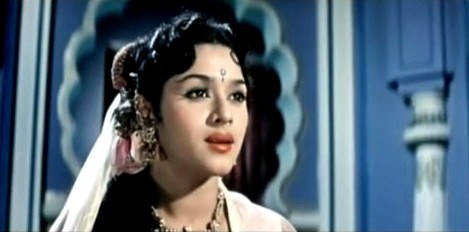
Pardesi was released in India in 1957, while Хождение за три моря ( Khozhdenie za tri morya ) was released in the USSR (Union of Soviet Socialist Republics) on 8 January 1958. Its subtitled English version, ‘Journey Beyond Three Seas,’ was premiered in New York in 1960.
The Hindi-Urdu version is 152 min long.
Even though it starred Nargis, the most successful heroine of the time, this biopic of Afanasi, a 15th century Russian explorer in India, did not get a theatrical release beyond left-leaning arthouse cinemas. T-Series has issued the film on DVD. The wide-screen SovScope format is intact but only a black and white print survives.
(Till the late 1960s many A grade, big budget [e.g. Saawan ki Ghata] as well as B+ films [e.g. Spy in Rome] were shot in 35mm and colour; however, several prints of these films were released in black and white and 16mm for rural markets and complimentary screenings at open-air defence services amphitheatres.)
The full film is available in B&W on [YouTube] in B&W. Its Censor Certificate states ‘Colour, Scope’ and gives the name of its filmmakers as ‘Meera Movies’ and ‘Son[?]a Sansar International.’ The film's co-producer was Manmohan Sabir (the other producer's name was not mentioned in the credits of Pardesi). Abbas' name appears before Pronim's in the Hindi-Urdu version. Incidentally, V.M. Pronim is the spelling used in this version, though in the Soviet maestro's international biographies it is Pronin.
More excitingly, more than 25 minutes of the film are available in sharp, high quality colour and widescreen in the form of Hindi-Urdu songs [YouTube]. They could perhaps have been taken from the Russian version in which the songs would have appeared in Hindi-Urdu. The music is by Anil Biswas. On the other hand, there are no subtitles. So, perhaps a good-quality Hindi-Urdu print in colour does survive.
These colour and widescreen (SovScope) sequences and the Censor Certificate should establish beyond doubt which the first Indian film in widescreen was, and whether Pardesi can be considered an Indian film at all.
The auteurs
Directors:
Khwaja Ahmad Abbas, Vasili Pronin
Writers:
Khwaja Ahmad Abbas, Mariya Smirnova
Producers:
Naya Sansar
Mosfilm
Cast
(In the order shown in the credits of Pardesi)
Nargis
Oleg [Strizhenov, who played Afanasi)
Balraj Sahni
Prithviraj Kapoor
Padmini
(In the alphabetical order)
Achala Sachdev
David Abraham
Iya Arepina
Manmohan Krishna
P. Jairaj
Stepan Kayukov
Varvara Obukhova
Vitali Belyakov
Technical auteurs
Music composers
Anil Biswas
Boris Tchaikovsky
Playback singers
Lata Mangeshkar
Manna Dey ...
Meena Kapoor ...
Cinematography:
Yevgeni Andrikanis, Vladimir Nikolayev, S. Ramachandra
Technical specifications
Color Sovcolor
Aspect Ratio
2.35 : 1
Some prints had the ratio: 1.37 : 1
Printed Film Format 35 mm
Awards
Khwaja Ahmad Abbas and Vasili Pronin were nominated for what was then and remains the world’s most prestigious award for a feature film, the Palme d'Or at the Cannes Film Festival 1958.
At the Filmfare Awards 1958, M.R. Achrekar won the Best Art Director award for the film.
